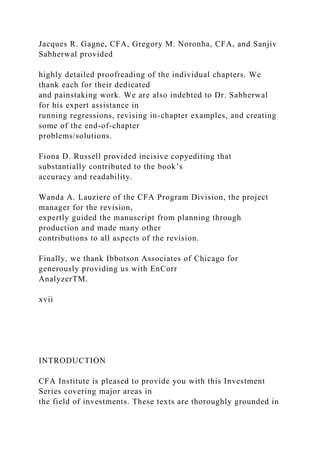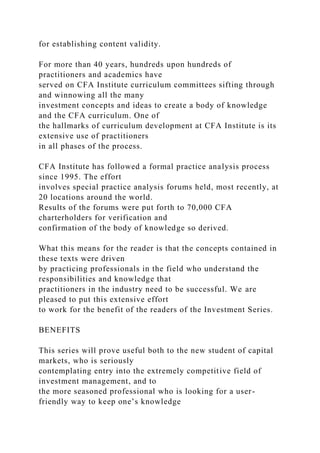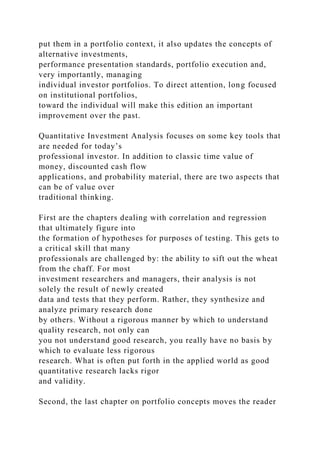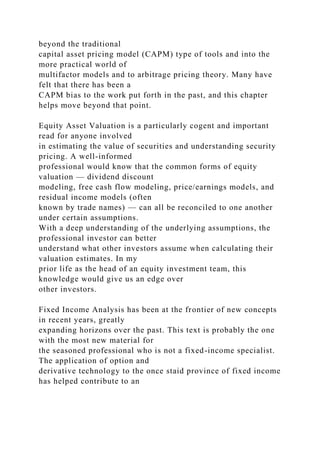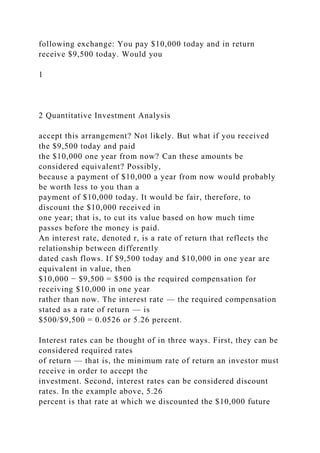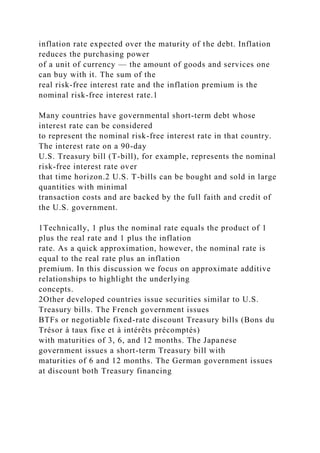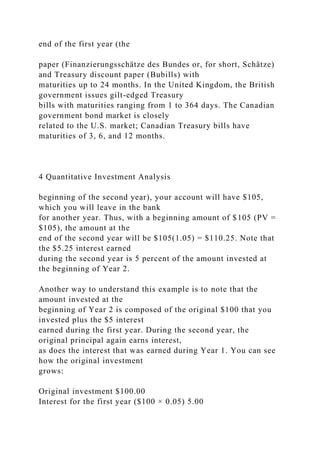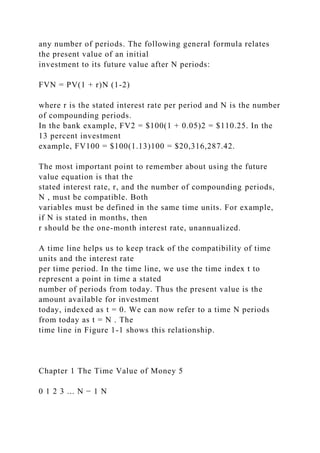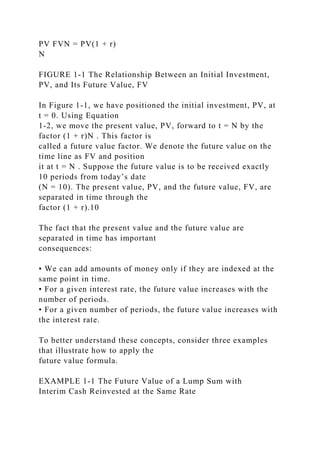The document is the second edition of 'Quantitative Investment Analysis' by Defusco et al., focusing on the application of quantitative methods for investment decision-making. It covers a range of topics including time value of money, statistical concepts, probability, and portfolio analysis, providing tools and frameworks for analyzing the complexities of financial markets. The book aims to enhance understanding of the interrelationships among various economic and behavioral factors that influence security prices.
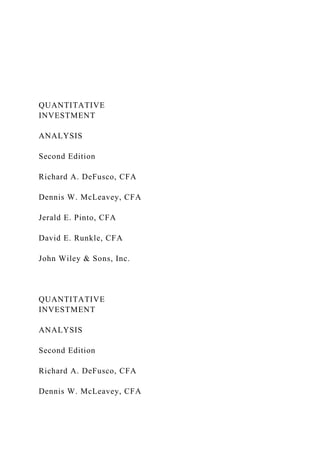

![written sales materials. The advice and strategies
contained herein may not be suitable for your situation. You
should consult with a professional where appropriate.
Neither the publisher nor author shall be liable for any loss of
profit or any other commercial damages, including but
not limited to special, incidental, consequential, or other
damages.
For general information on our other products and services or
for technical support, please contact our Customer
Care Department within the United States at (800) 762-2974,
outside the United States at (317) 572-3993 or fax
(317) 572-4002.
Wiley also publishes its books in a variety of electronic
formats. Some content that appears in print may not be
available in electronic formats. For more information about
Wiley products, visit our Web site at www.wiley.com.
Library of Congress Cataloging-in-Publication Data:
Quantitative investment analysis / Richard A. DeFusco . . . [et
al.]. —
2nd ed.
p. cm. — (The CFA Institute investment series)
Includes bibliographical references.
ISBN-13 978-0-470-05220-4 (cloth)
ISBN-10 0-470-05220-1 (cloth)
1. Investment analysis — Mathematical models. I. DeFusco,
Richard
Armand.
HG4529.Q35 2006
332.601’5195 — dc22](https://image.slidesharecdn.com/quantitativeinvestmentanalysissecondedition-221026115031-26f75b96/85/QUANTITATIVEINVESTMENTANALYSISSecond-Edition-docx-3-320.jpg)



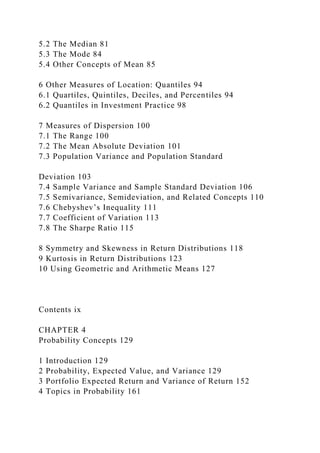




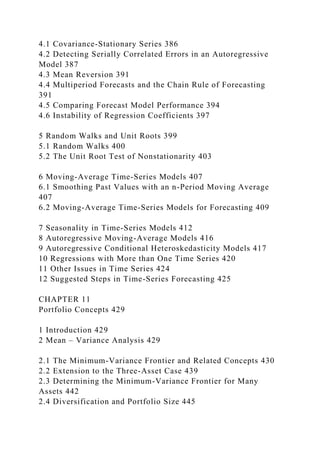


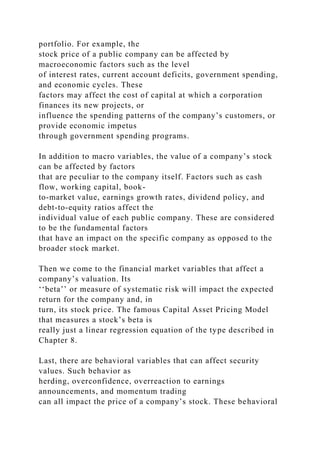






![xvi Foreword
out our cognitive biases in a way that we simply cannot do
ourselves by looking in the mirror
(in fact, when I look in the mirror I see someone who is six feet
and four inches tall and
incredibly good looking but then my wife Mary reminds me that
I am only six feet and one
inch tall and she had better offers).
All in all, the investor will appreciate the methods, models, and
techniques provided in
this text. This book serves as an excellent introduction to those
investors who are just beginning
to use quantitative tools in their portfolio management process
as well as an excellent reference
guide for those already converted. Quantitative investing is not
difficult to grasp — even a
lawyer can do it.
Mark J. P. Anson
CEO, Hermes Pensions Management
CEO, British Telecomm Pension Scheme
[email protected]
ACKNOWLEDGMENTS
W e would like to thank the many individuals who played
important roles in producingthis book.
Robert R. Johnson, CFA, Managing Director of the CFA and
CIPM Programs Division,](https://image.slidesharecdn.com/quantitativeinvestmentanalysissecondedition-221026115031-26f75b96/85/QUANTITATIVEINVESTMENTANALYSISSecond-Edition-docx-22-320.jpg)

